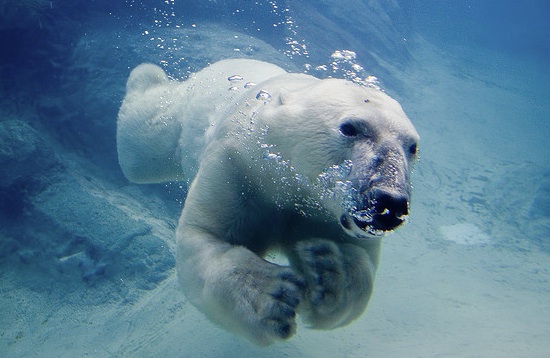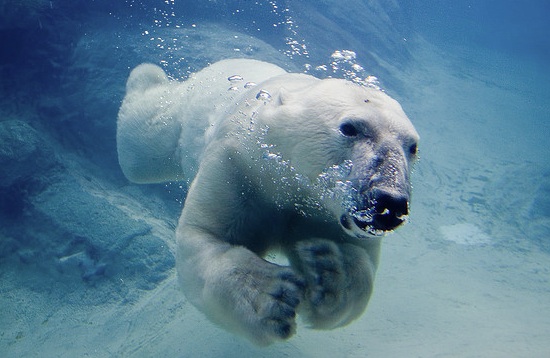
If you watch nature shows, you know that male bears see cubs as tasty little McNuggets with fur, so it's not like one bear eating another is a big deal.
Except that in the Arctic, polar bears are increasingly deprived of the sea ice they rely on to access seals and other tasty mammalian treats. This has led to speculation that, trapped on land where there's no food, they may be resorting to cannibalism at rates significantly higher than before.
Jenny Ross, a photojournalist who says she’s been seeing higher instances of bear-on-bear action, told the BBC:
Predating another bear is a way to get food; it's probably a relatively easy way for a big adult male. And it seems that because of the circumstances of the loss of sea ice — that kind of behavior may be becoming more common.
Ross co-authored a paper on this bear-eat-bear world with a polar bear biologist, and just presented it at the American Geophysical Union meeting.
Photo: irishwildcat



